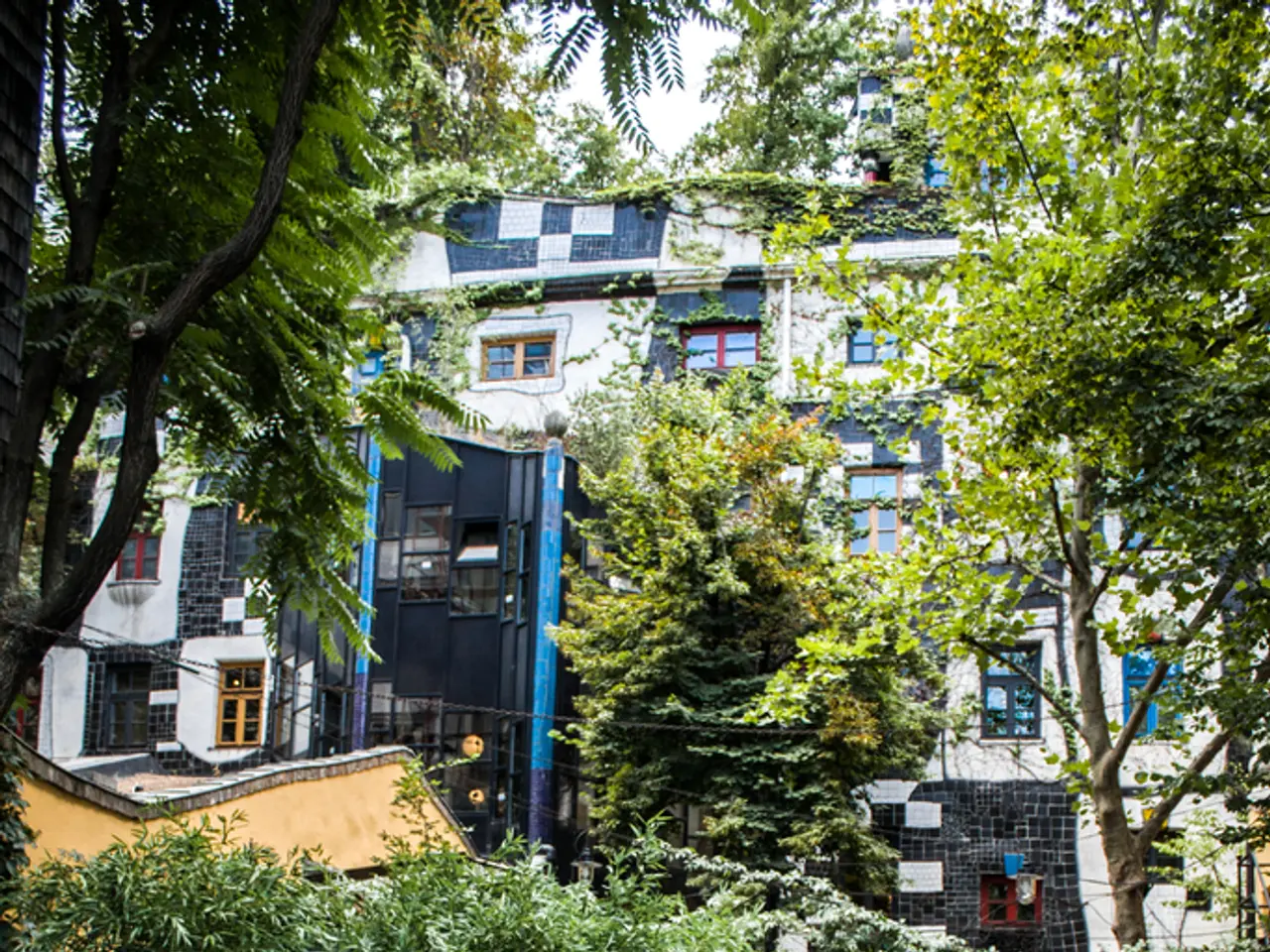Energy-conserving techniques for temperature regulation in sustainable homes and greenhouses via natural methods
Passive cooling strategies are revolutionising the greenhouse industry, offering a sustainable approach to temperature regulation without relying heavily on mechanical energy. Here's a look at the best practices for implementing passive cooling in greenhouse designs.
Natural Ventilation
Incorporating roof vents, louvres, and strategically placed openings allows hot air to escape and fresh cooler air to flow in, reducing heat buildup and maintaining humidity balance. This natural airflow system is crucial for regulating temperature in greenhouses.
Shading
Shading is key in passive cooling designs. Shade cloths, reflective roofing, or other shading devices block excessive solar radiation while allowing sufficient light for plants. These devices can be installed externally or internally to reduce heat penetration.
Thermal Mass
Utilising materials that absorb and slowly release heat, like insulated concrete foundations or water barrels, helps maintain a stable temperature within the greenhouse. For example, a climate battery system with pipes buried 4-6 feet underground leverages stable soil temperatures to cool air by passing it through underground tubes in summer.
Earth Integration (Climate Battery)
A buried tubing system that exchanges heat with the earth provides natural cooling in summer and warming in winter, stabilising greenhouse temperature year-round efficiently.
High-performance insulation
Insulated building materials and reflective surfaces reduce unwanted heat gain and improve the greenhouse’s ability to maintain comfortable temperatures passively.
Additional Techniques
- Evaporative cooling via plant transpiration or water features like green roofs or shaded courtyards can help reduce ambient temperature.
- Orientation and Site Planning: Minimise direct midday sun exposure and optimise prevailing winds for natural cooling airflow.
- Watering Strategies: Deep morning irrigation can help cool plant roots and reduce plant stress during hotter periods.
By integrating these passive cooling strategies, greenhouses can reduce their reliance on active cooling systems, decreasing energy consumption while maintaining a stable, productive growing environment.
Choosing Building Materials
When selecting building materials for passive cooling, choose materials that absorb and release heat slowly, like concrete or stone. Sustainable insulation options like straw bales are also effective.
Future Trends
In the future, passive cooling will utilise advanced materials, smart technologies, and bioinspired solutions to control ventilation and improve cooling. New trends include using nature's secrets to cool buildings (bioinspired cooling solutions) and using computers to optimise passive cooling design (computational fluid dynamics simulations).
Passive cooling is a game-changer for the greenhouse industry, offering a sustainable and energy-efficient approach to temperature regulation. By embracing these strategies, growers can create comfortable, productive environments while reducing their carbon footprint.
- Science and technology advancements in passive cooling strategies for greenhouses may lead to the use of bioinspired cooling solutions that mimic nature to control ventilation.
- Data and cloud computing can be used in the future to optimize passive cooling design through computational fluid dynamics simulations, helping growers create more efficient systems.
- In addition to the aforementioned practices, incorporating water management strategies such as water barrels and climate-change adaptation measures like deep morning irrigation can further enhance the sustainability of passive cooling systems in greenhouses.
- By implementing lifestyle changes that prioritize energy-efficient options, such as relying on rainwater for gardening or home use, individuals can contribute to biodiversity conservation and sustainability in their homes and gardens.
- Environmental science will continue to play a vital role in understanding and improving passive cooling systems, as well as in addressing climate-change challenges in the greenhouse industry and beyond.




